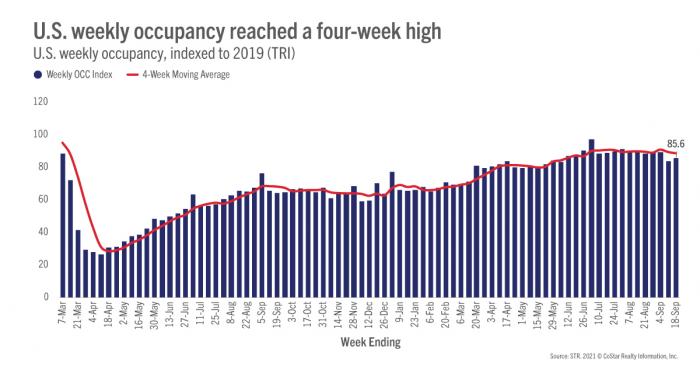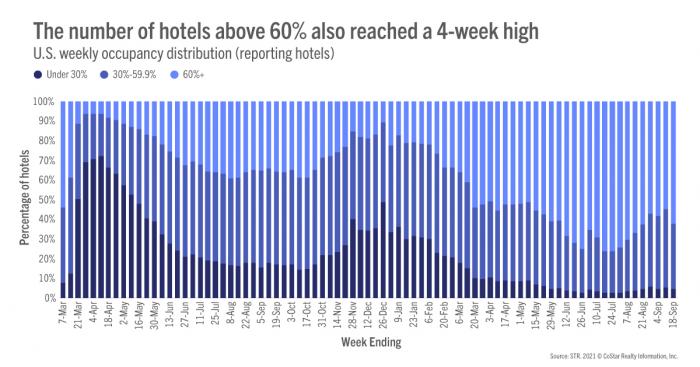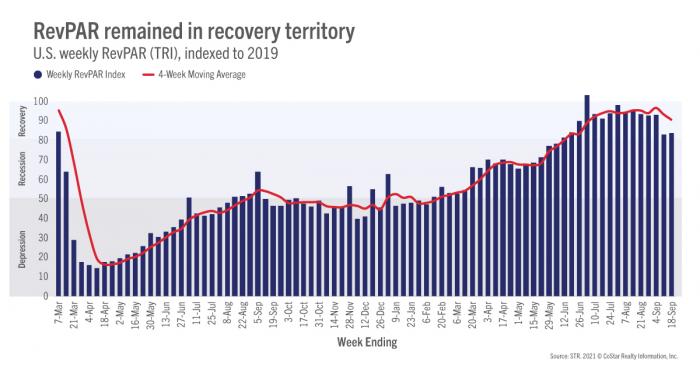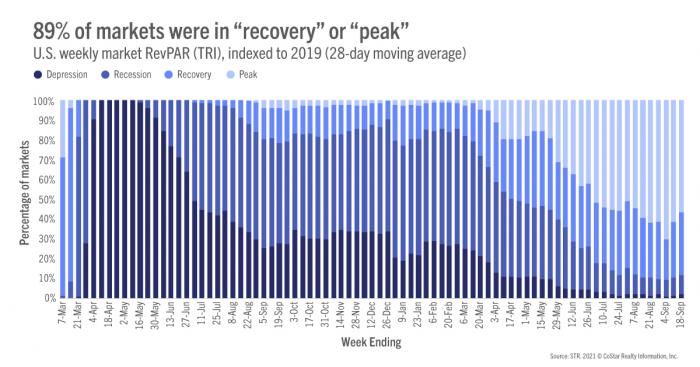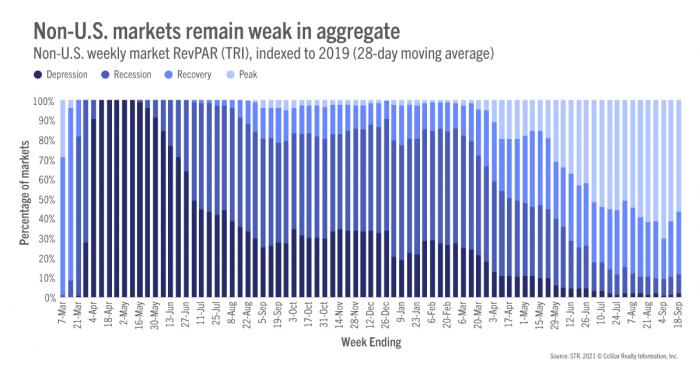Previous MRM versions: 4 September | 11 September
Week ending 18 September
In an unexpected turn, U.S. demand and occupancy advanced in the latest week of reporting (12-18 September 2021) to the best levels of the past four weeks. Weekly demand increased 1.2 million rooms to 24.3 million, which was the largest weekly gain of the past nine weeks, pushing occupancy to 63.0%. Subdued demand was expected this week due to the mid-week observance of Yom Kippur.
Daily occupancy advanced every day of the week, except Sunday, growing week on week and day on day, culminating in a level of 78% on Saturday. That level was the second highest of the past seven weeks and was only surpassed by Saturday ahead of Labor Day. On a total-room-inventory basis (TRI), which accounts for temporarily closed hotels, weekly occupancy was 60.6%. A little more than 49,000 rooms remain temporarily closed, mostly in New York City, which accounts for 28% of the temporarily closed rooms, and Orlando (12%).
